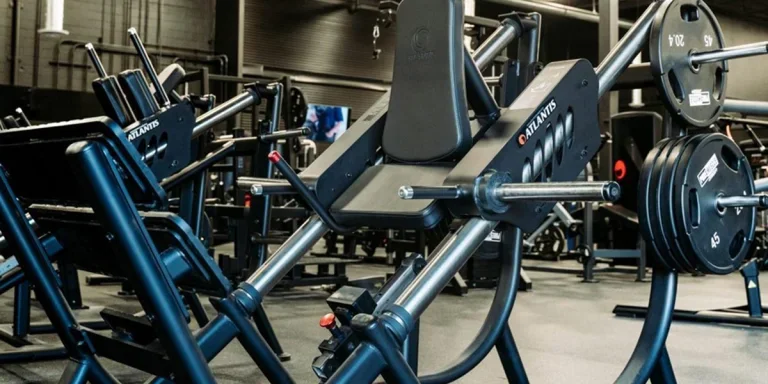Strength training has never been this popular, as many fit-fams add it to their fitness routines—both beginners and pros alike. This means it has become imperative to have plate-loaded machines in the gym. More gym lovers see them as one of the most popular machines for helping build muscles and improve overall fitness.
Unsurprisingly, plate-loaded machines are super profitable investments for business buyers in the gym equipment market. However, even though the potential is there, businesses need to select the best options to make the most of this opportunity. That’s why this guide covers everything you need to know to select the best plate-loaded machines in 2024.
Table of Contents
What are plate-loaded machines, and what are their benefits?
6 types of plate-loaded machines sellers can buy
4 factors sellers must consider before stocking up on plate-loaded machines
Bottom line
What are plate-loaded machines, and what are their benefits?
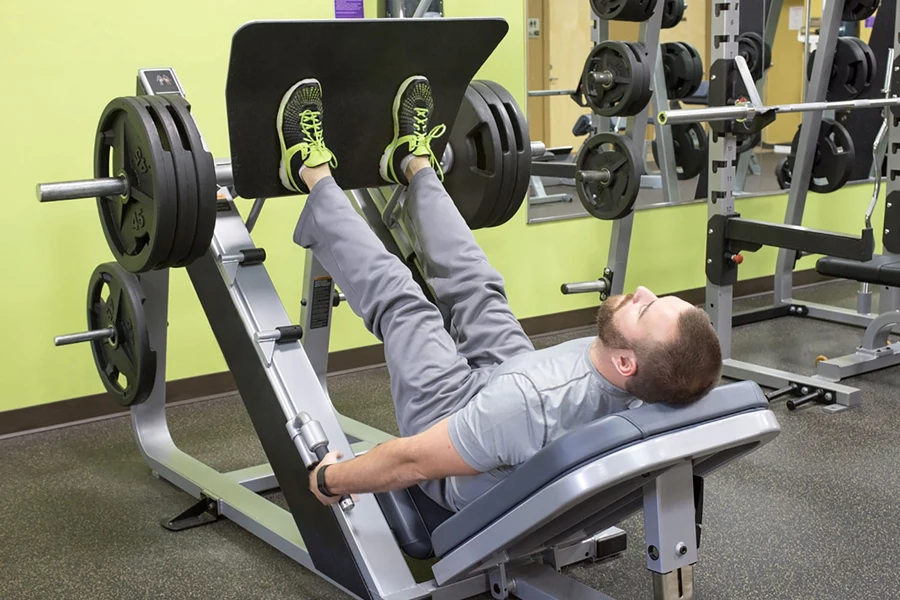
Plate-loaded machines are a type of strength training equipment that uses round plates instead of rectangular stacks to add weight. Consumers can hang the plates on their machines before lifting and removing them when necessary. Here’s a look at some of the benefits these machines can offer customers.
Benefits of plate-loaded machines
Fitness enthusiasts love them primarily because of their high weight limit. Users can add heavier plates and vice versa without risking injury. Although the weight limit is not unlimited, it’s way more than what users would get from selectorized machines.
Cost is another big benefit, especially for gym owners. They may already have plates waiting, allowing them to purchase these machines without extra weights and potentially save costs. Also, consumers can easily move weights around to do other exercises. For instance, they can add weights to chest presses, curl bars, or deadlifts without buying plates for each machine.
6 types of plate-loaded machines sellers can buy
Hack squat machine
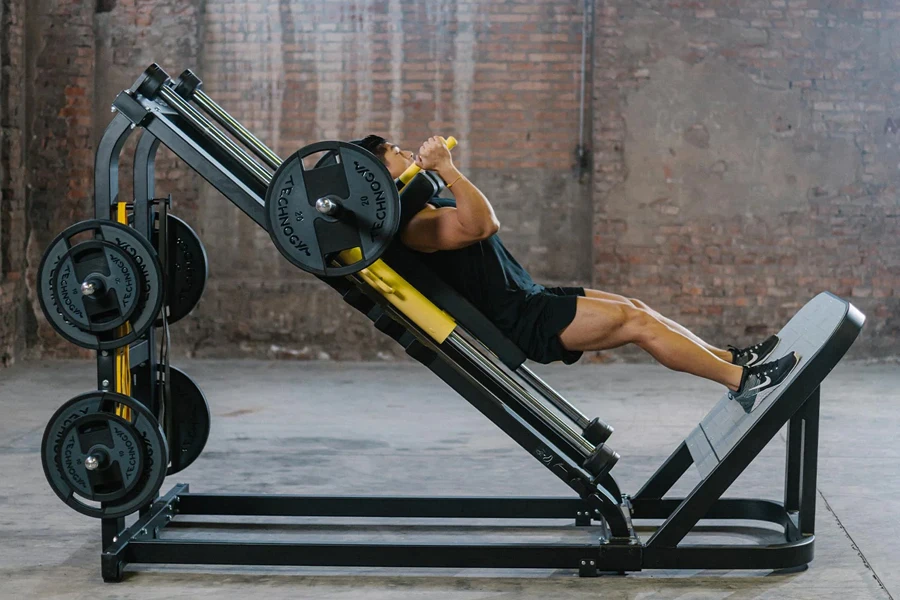
These plate-loaded machines have designs that target the user’s quads, hamstrings, and claves using a slightly different motion than traditional squats. The key feature of a hack squat machine (74,000 average searches in 2024) is the angled, large footplate that users push against to lift the added weight. These machines are great for people focusing more on leg muscle development (particularly the quads).
Smith machine
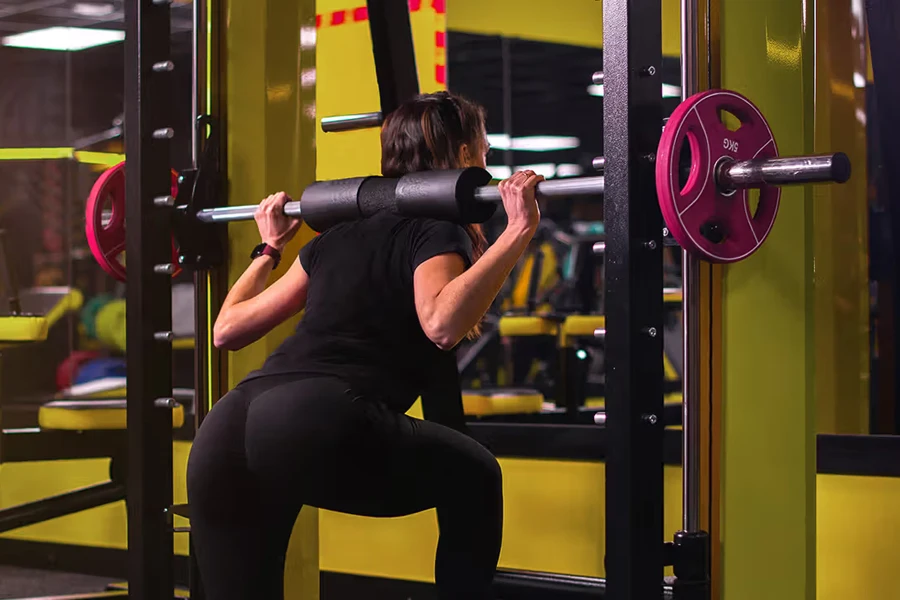
Smith machines (368,000 searches monthly in 2024) are incredibly versatile. Customers can use them for various exercises, including squats, bench presses, and lunges. Usually, Smith machines feature barbells attached to rails—making it easy for users to lift their preferred weights without worrying about stability or balance. These strength-training machines are great for people working on multiple muscle groups with compound exercises.
Seated row machine
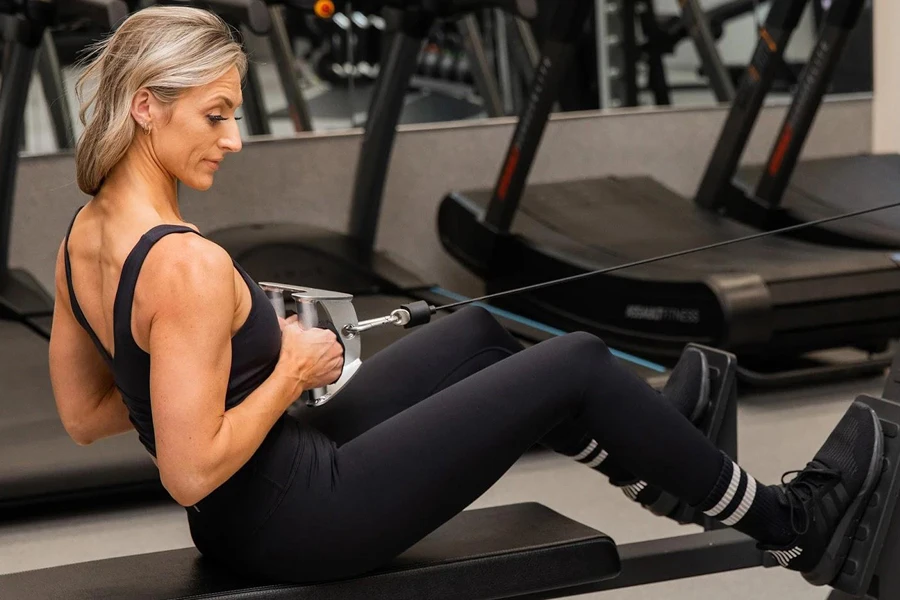
A seated row machine (60,500 inquiries in February and March 2024 alone) is a great choice for individuals targeting their back, shoulders, and arm muscles. This plate-loaded machine comes with handles attached to lever arms and seats. These features allow consumers to pull the handles towards their chest, engaging their back muscles. Hence, seated row machines are the go-to for improving posture and upper body strength.
Lat pulldown machine
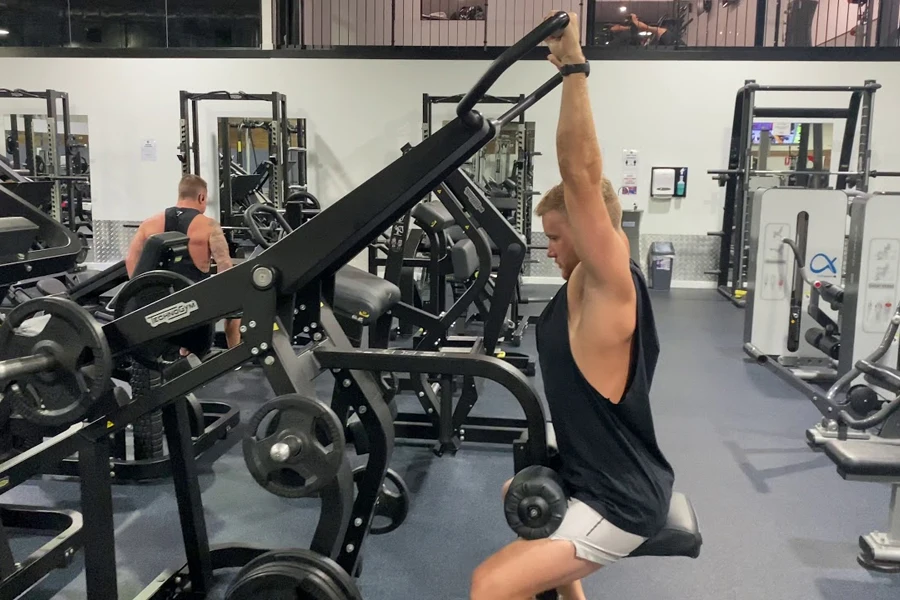
These machines also target the user’s back, shoulders, and arm muscles. But instead of handles, they have bars attached to lever arms that consumers can pull towards their chest, stimulating their latissimus dorsi muscles. Lat pulldown machines (110,000 searches in March 2024) are also more versatile than seated rows, as customers can use them for triceps, bicep curls, and pushdowns.
Leg press machine
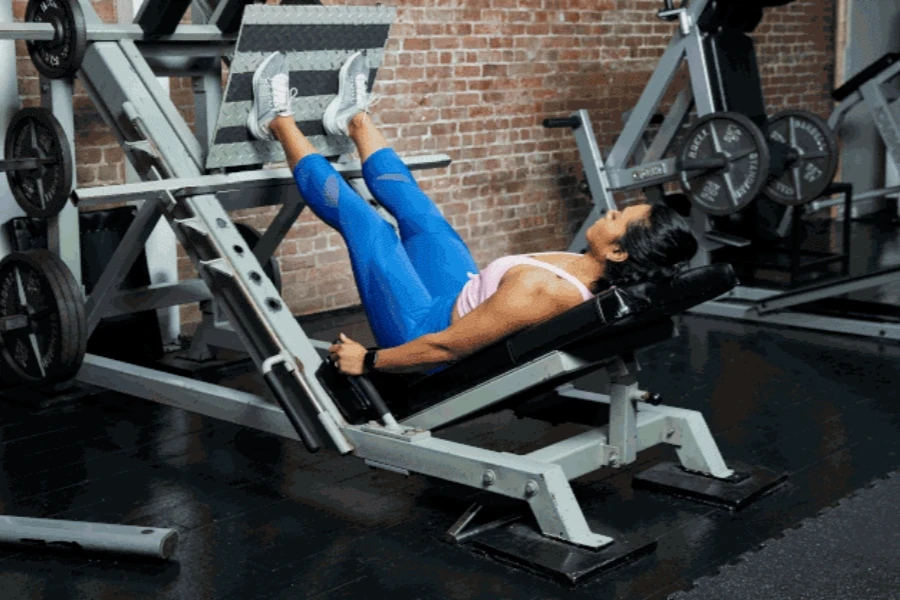
This plate-loaded machine is another great option for building lower body strength and power. Leg press machines, with 165,000 searches in March 2024, feature large footplates that aid users to push away from their bodies to engage the weight—targeting the quadriceps, hamstrings, and glutes.
Chest press machine
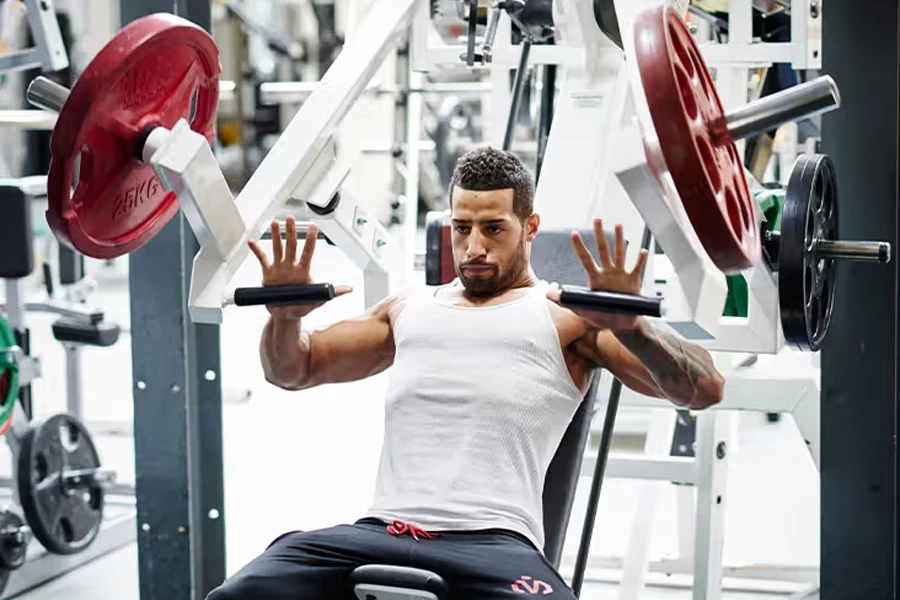
As their name implies, this machine is a top choice for engaging the chest muscles. However, they can also work on the triceps and shoulders. Typically, they come with adjustable benches and lever arms for consumers to push forward when engaging the targeted muscles.
4 factors sellers must consider before stocking up on plate-loaded machines
The consumer’s fitness goals
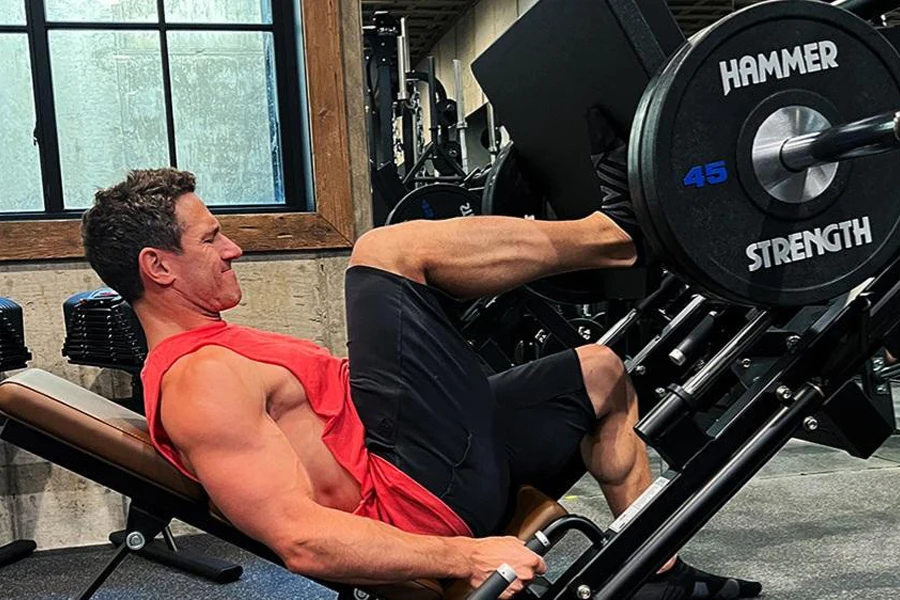
Understanding the customer’s potential fitness goal is crucial for successful sales in the plate-loaded machine market. Knowing common fitness goals allows retailers to stock machines that directly align with what their target market wants. This increases their chances of making more sales and decreases the risk of having unsold inventory.
So, how would a business know what fitness goals to target? First, research the market. To do this adequately, retailers can observe what machines are popular in nearby gyms, read fitness blogs/magazines, and follow fitness gym social media pages to understand current training trends. Then, consider the age, gender, and experience level of the targeted customers—different demographics often have distinct goals.
Second, create a list of common goals. These could include strength training, hypertrophy, weight loss/fat burning, sports-specific training, or rehabilitation. Align the inventory with the researched goals.
Here’s an example:
Suppose market research reveals a high demand for strength training and bodybuilding in a retailer’s area. The smart thing to do is prioritize stocking machines like leg presses, hack squats, row machines, and pull-down machines.
Bonus tip: Offer a range of machines, but don’t overstock. An ideal strategy would be to focus on popular options first and expand later or when needed. Remember to evaluate fitness trends and adjust inventories accordingly continuously.
Available space
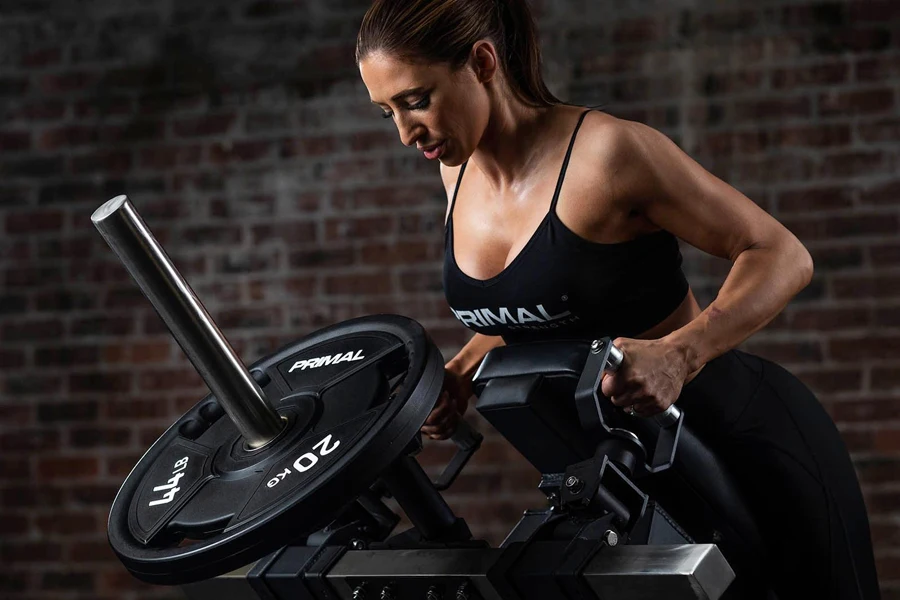
This factor is critical when stocking up on plate-loaded machines. The units can be bulky. So, consumers with limited space in their home gyms or training areas will need options that fit comfortably—not considering space could limit potential sales!
Businesses stocking these machines should familiarize themselves with each machine’s exact floor space and height requirements. Next, invest in various sizes to cater to those with large dedicated gyms and individuals with smaller home workout areas.
Market compact machines with smaller footprints for smaller workout areas to those with smaller available workout spaces. These include seated calf raises, lever-arm rows, or wall-mounted cable systems. Alternatively, multi-purpose machines (like smith machines or leg press/hack squat combos) that offer several exercises within one unit can help save valuable space. Power racks, full lat pull-down, row stations, and other full-sized machines cater to those with ample space.
Expert marketing tip: Include clear dimensions of each machine on websites and in-store to give consumers a clear idea of their purchase. Offer 3D models or augmented reality features so that customers can visualize machines in their intended space.
Adjustability
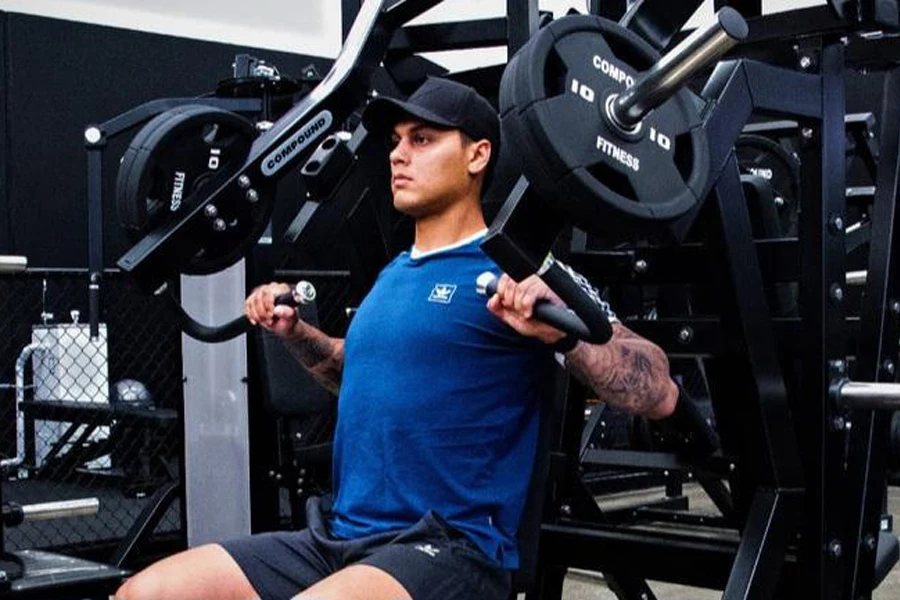
Adjustability is a major selling point for plate-loaded machines and should be a key consideration when adding them to inventories. Choose plate-loaded machines with multiple adjustment points (seat height, back pads, handles, etc.) when possible. In addition, business buyers must also know what is adjustable and how it affects the exercises users can perform with each machine. For example, adjustable bench presses accommodate people with different arm lengths or those wanting incline/decline variations.
Also, leg presses with multiple weight horn positions allow users to add weight as they gradually get stronger. Another great example is how seated chest presses with adjustable seat heights let users hit different portions of their chest muscles. With this knowledge, business buyers can easily highlight each in their product descriptions and promotions, emphasizing enhanced workout customization as a huge selling point.
Safety features
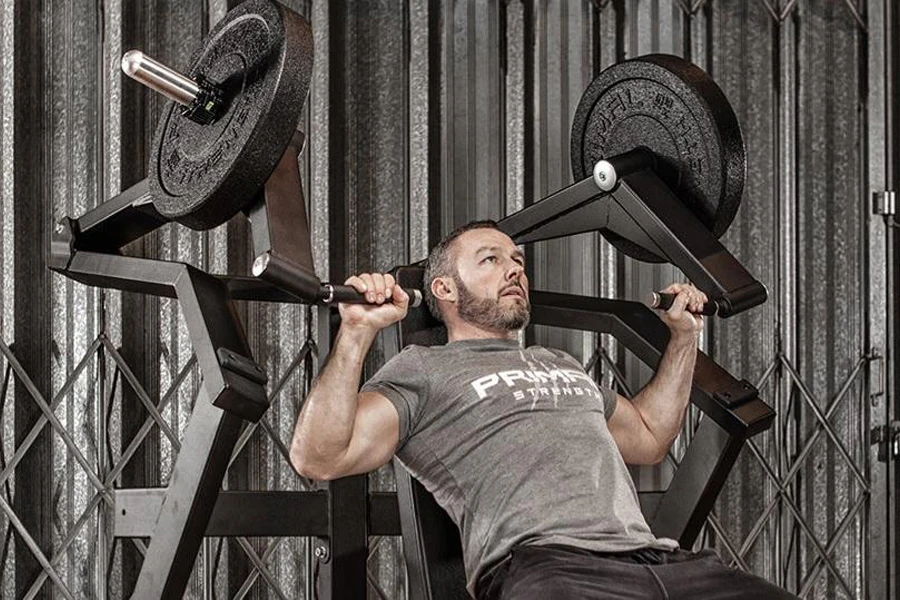
While not every plate-loaded machine needs extensive safety features, primarily stocking machines with well-designed safety elements is a wise business strategy. The top priority should be minimizing the risk of injury to customers. Safety features like spotter arms, weight stops, and secure locking mechanisms can help prevent accidents, protecting customers from injury and businesses from potential liability.
Bottom line
The fitness equipment industry is constantly evolving. Daily, more users commit themselves to increasing their strength and power, which has boosted demand for plate-loaded machines at home and public gyms. The types of plate-loaded machines discussed in this blog have high search interests (based on Google data), so retailers can use the tips and tricks in this guide to choose the perfect ones for their fitness stores.
And finally, don’t forget to subscribe to Alibaba’s sports section to gain access to more updates and similar topics.
